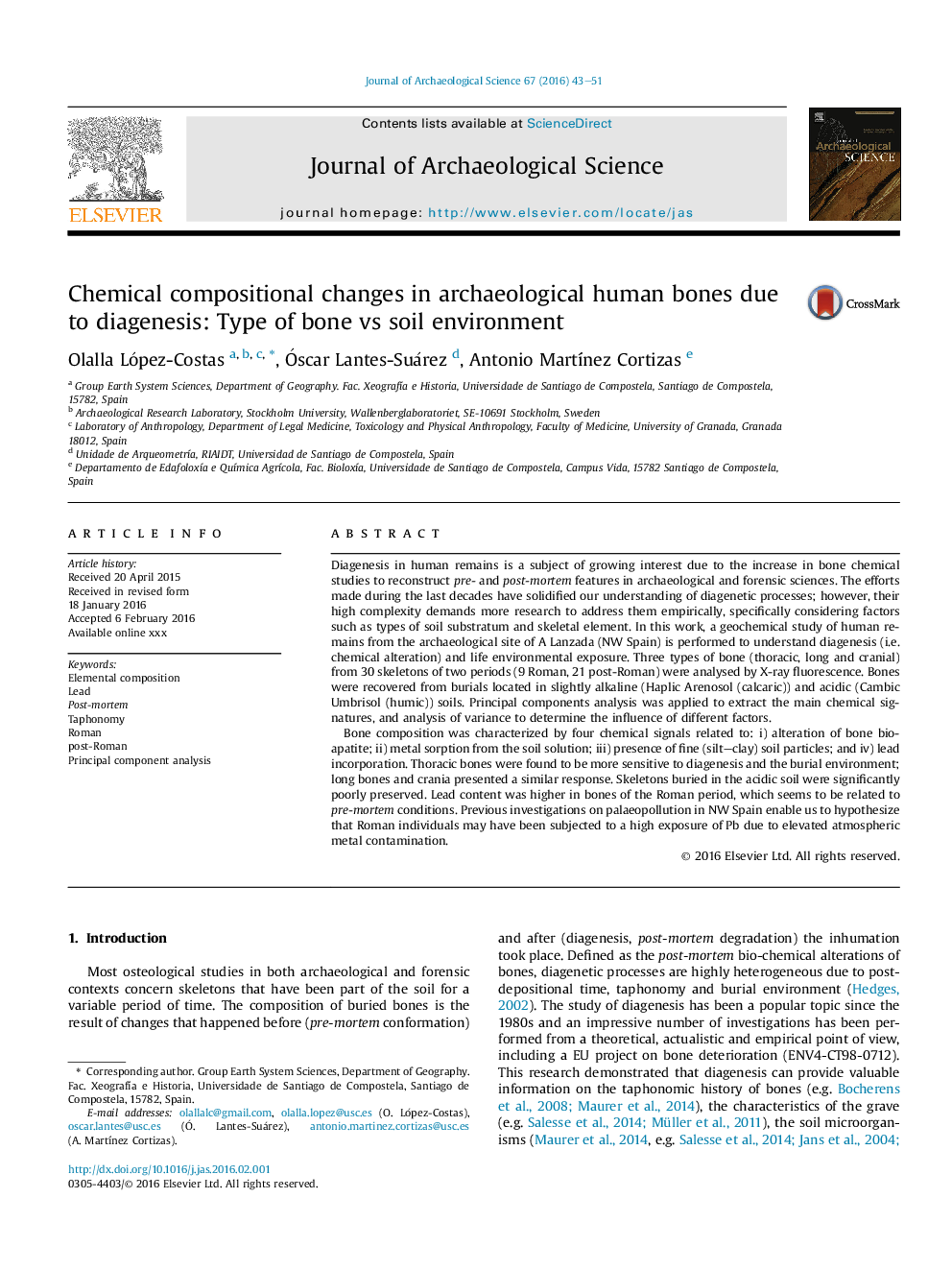| Article ID | Journal | Published Year | Pages | File Type |
|---|---|---|---|---|
| 7441492 | Journal of Archaeological Science | 2016 | 9 Pages |
Abstract
Bone composition was characterized by four chemical signals related to: i) alteration of bone bioapatite; ii) metal sorption from the soil solution; iii) presence of fine (silt-clay) soil particles; and iv) lead incorporation. Thoracic bones were found to be more sensitive to diagenesis and the burial environment; long bones and crania presented a similar response. Skeletons buried in the acidic soil were significantly poorly preserved. Lead content was higher in bones of the Roman period, which seems to be related to pre-mortem conditions. Previous investigations on palaeopollution in NW Spain enable us to hypothesize that Roman individuals may have been subjected to a high exposure of Pb due to elevated atmospheric metal contamination.
Related Topics
Physical Sciences and Engineering
Materials Science
Materials Science (General)
Authors
Olalla López-Costas, Ãscar Lantes-Suárez, Antonio MartÃnez Cortizas,
